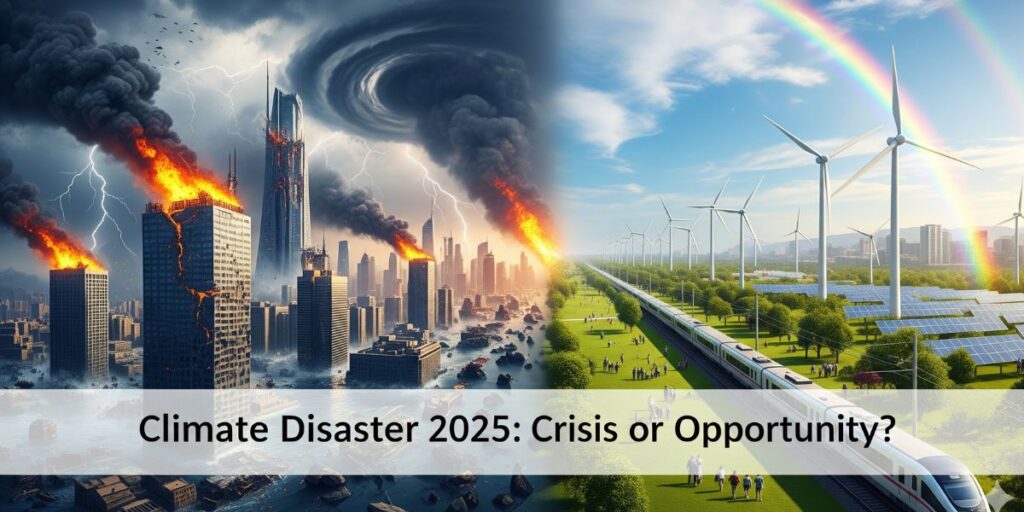Imagine waking up one morning to news of another flooded city, another wildfire tearing through communities, and another heatwave claiming lives. It feels almost normal now, but that’s exactly the problem. The phrase climate disaster 2025 isn’t some distant headline; it’s today’s lived reality for millions.
We often think of climate change as something abstract, like numbers on a chart or debates in politics. But in 2025, it has become deeply personal. Families are losing homes, farmers are watching crops fail, and entire communities are struggling to breathe under smoke-filled skies. The Earth isn’t just warming, it’s fighting back, and our cities, infrastructure, and daily lives are caught in the crossfire.
The Meaning of Climate Disaster 2025
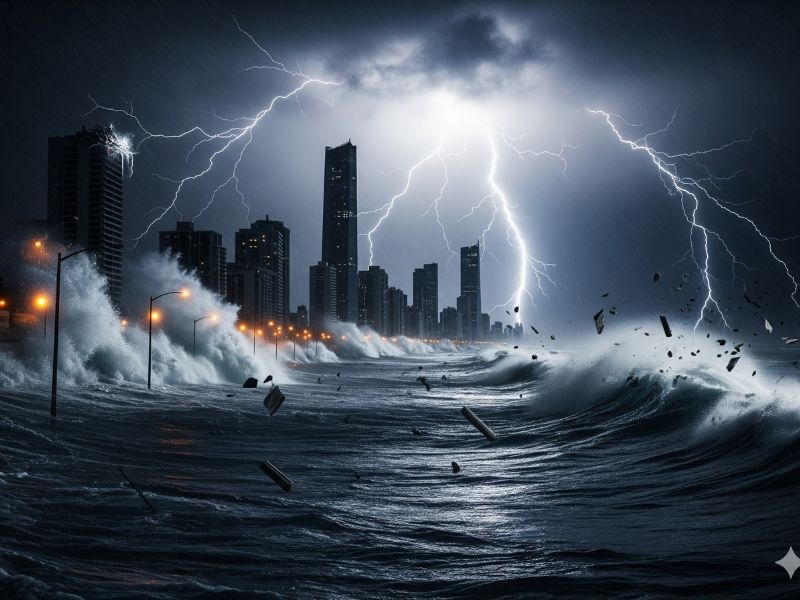
When we talk about a climate disaster 2025, we’re not speaking of one singular event. Instead, it’s a chain reaction of crises:
- Rising seas flooding coastal regions.
- Record-breaking heatwaves pushing health systems to their limits.
- Unpredictable storms collapsing power grids and homes.
- Wildfires spreading with alarming speed.
It’s a domino effect. Each event stresses already fragile systems, exposing just how unprepared we are for the new normal.
Crumbling Cities: Where the Impact Hits Hardest
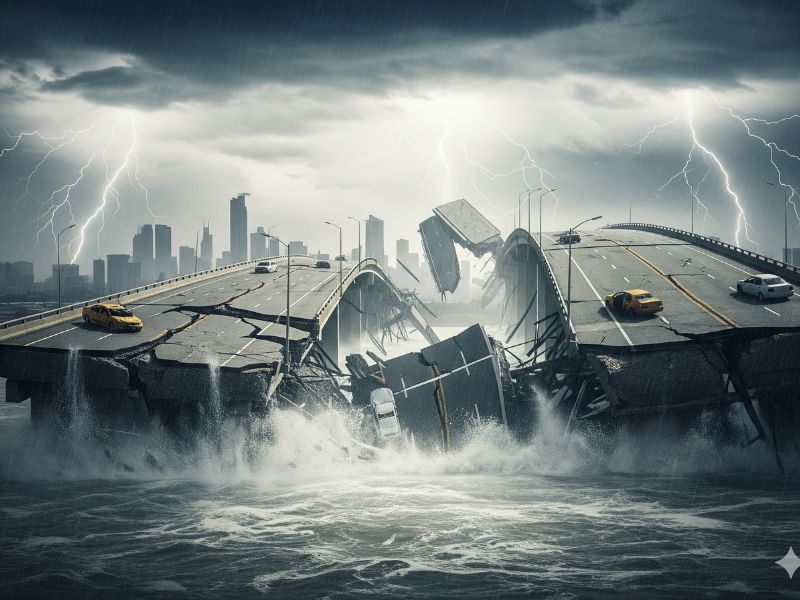
Cities are at the center of the climate disaster 2025. Why? Because they are where the majority of people live, and they rely on delicate systems that can’t withstand constant disruption.
- Infrastructure Breakdown
- Roads buckle under extreme heat.
- Bridges collapse after relentless flooding.
- Power lines and water systems fail in storms.
- Housing and Shelter Crisis
- Affordable housing vanishes after repeated floods.
- Rent skyrockets in “climate-safe” regions.
- Displaced families face homelessness.
- Health Emergencies
- Hospitals overflow during heatwaves.
- Pollution and wildfire smoke cause respiratory illnesses.
- Clean water becomes scarce in disaster-hit zones.
In short, our urban centers weren’t designed for this level of chaos.
Drowning Cities, Burning Nations
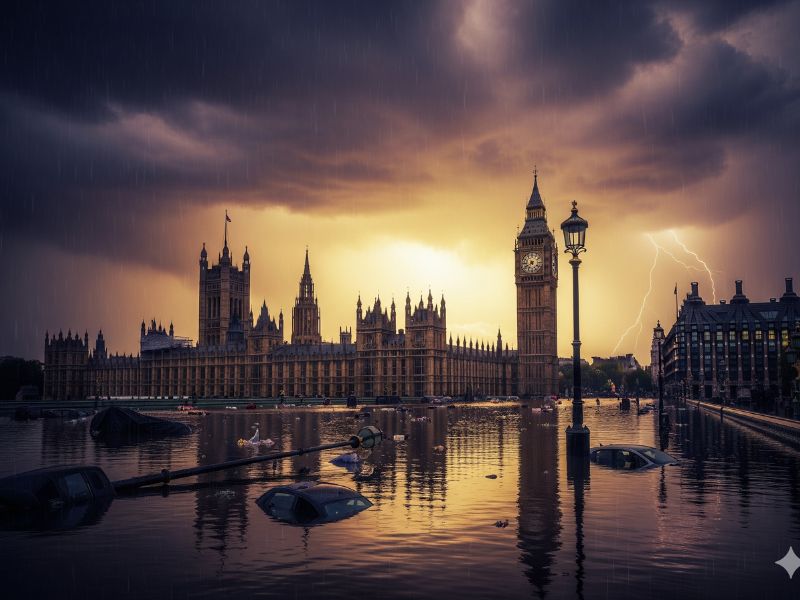
The year 2025 has been a brutal reminder that no corner of the world is safe. The climate disaster 2025 has spared no region, leaving behind a trail of destruction that looks more like a scene from an apocalyptic film than real life. Cities are drowning, nations are burning, and entire communities are struggling to hold on.
- New York City & Miami, USA – Coastal defenses buckle as storm surges and rising seas push water into streets, subways, and homes. Miami’s skyline reflects off flooded streets, and New York faces blackouts after relentless storms.
- Venice, Italy – Once celebrated for its canals, Venice is now a tragic symbol of drowning heritage, where ancient squares are permanently submerged.
- Jakarta, Indonesia – Already sinking, Jakarta is losing its battle against water. Floods displace thousands, making relocation plans urgent and unavoidable.
- Delhi, India – A suffocating wave of heat leaves hospitals overflowing, while millions endure power outages as the grid collapses.
- California, USA – Wildfires rage hotter and faster than ever before, consuming neighborhoods in hours and leaving tens of thousands homeless.
- Sydney, Australia – Smoke from unstoppable bushfires turns the skies blood-red, forcing mass evacuations and choking air quality.
- Saharan Africa – Drought devastates agriculture, leaving families without food and sparking waves of climate-driven migration.
- South America (Amazon Rainforest) – Once the planet’s lungs, the Amazon now gasps for survival as fires and deforestation fuel catastrophe.
- London, UK – The Thames barrier struggles as torrential rains cause floods, shutting down transport and damaging homes.
From the wealthiest capitals to the poorest villages, the climate disaster 2025 makes one thing brutally clear: the planet doesn’t discriminate. No wall, no wealth, and no borders can shield humanity from a collapsing climate.
The Human Side of the Climate Disaster
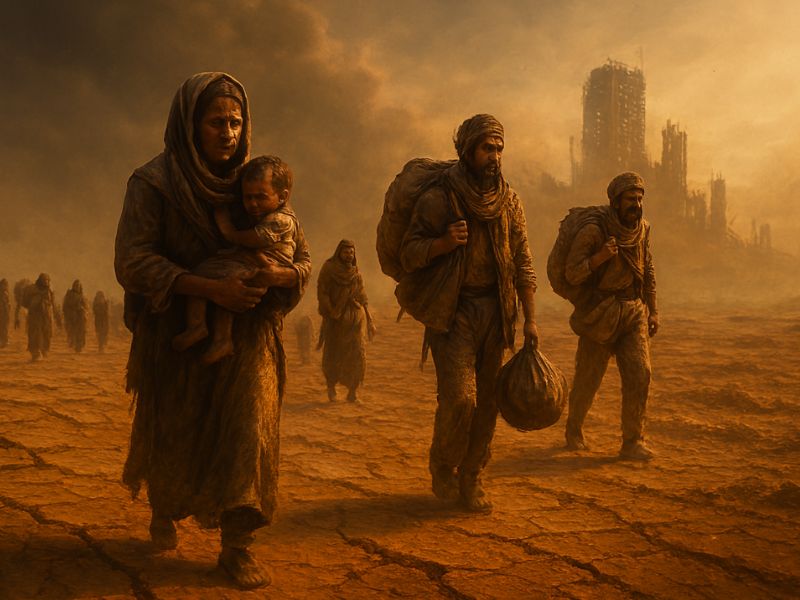
Statistics don’t tell the full story. Behind every “disaster report” is a family trying to survive.
- A mother in Miami carrying her children through waist-deep water when her neighborhood floods.
- Farmers in India watching their rice fields dry up after months without rain.
- An elderly couple in California forced to evacuate three times in two years due to wildfires.
The climate disaster 2025 isn’t just about cities falling apart, it’s about human lives being upended again and again. The same thing is happening with mental health, it is collapsing at an alarming rate, yet people doesn’t seem to give a damn about it.
Why We Struggle to Act

Despite the urgency, progress is painfully slow. Why?
- Political resistance: Short-term gains outweigh long-term solutions.
- Economic interests: Industries profiting from fossil fuels fight change.
- Psychological distance: Many people still think, “It won’t affect me.”
But the climate disaster 2025 is already proving that no one is immune. From Europe’s summer heatwaves to Asia’s floods, climate chaos touches us all.
Can Technology Save Us?

There’s hope in innovation. Around the world, people are fighting back with ideas as bold as the crisis itself.
- Smart grids to handle energy demand during extreme weather.
- Green architecture that withstands floods and heat.
- AI-driven disaster prediction helping communities evacuate faster.
- Carbon capture and renewable energy scaling up like never before.
While technology isn’t a silver bullet, it’s one of the most powerful tools we have to reduce suffering and prepare for what’s next.
Resilience: Communities Fighting Back
Not every story of the climate disaster 2025 is one of despair. Across the globe, communities are adapting:
Villages in Bangladesh building floating schools to keep education alive during floods.
- California neighborhoods creating fireproof zones with smart landscaping.
- African farmers using drought-resistant crops to secure food supplies.
These stories show that resilience is possible when people come together with creativity and courage.
What Individuals Can Do Now
You might feel powerless in the face of something so huge. But individual choices add up. Here are practical steps:
- Reduce Carbon Footprint
- Switch to renewable energy at home.
- Use public transport or carpool.
- Cut down on single-use plastics.
- Support Climate-Forward Policies
- Vote for leaders who prioritize climate action.
- Support businesses that commit to sustainability.
- Build Personal Resilience
- Prepare an emergency kit.
- Insure your home against climate-related risks.
- Stay informed about local hazards.
FAQs on Climate Disaster 2025
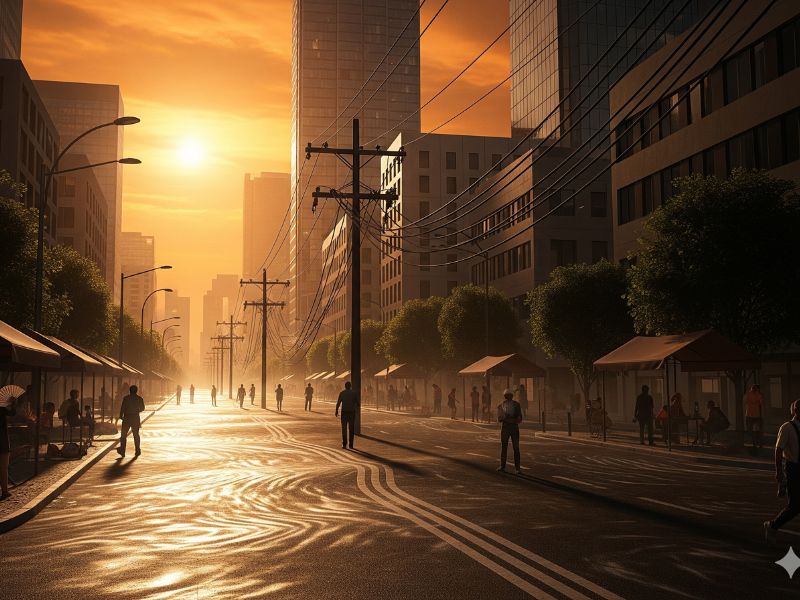
Q1: What exactly does “climate disaster 2025” mean?
It refers to the compounding climate crises, heatwaves, floods, storms, and wildfires, that have escalated significantly in 2025, impacting cities, infrastructure, and human lives.
Q2: Are cities really at risk of collapse?
Yes. Many urban systems weren’t built for today’s climate extremes. Infrastructure failure, housing crises, and health emergencies are already showing cracks.
Q3: Is there any hope, or is it too late?
It’s not too late. While damage is real, innovation, adaptation, and global cooperation can prevent the worst-case scenarios.
Q4: What role does individual action play?
Individual action helps reduce carbon footprints and build community resilience, but systemic change through policies and industries is equally essential.
Q5: Which regions are most affected in 2025?
Low-lying coastal regions, drought-prone areas, and wildfire zones are among the hardest hit, but no region is untouched.
Q6: How can communities prepare?
By investing in resilient infrastructure, disaster planning, and sustainable living practices, communities can reduce vulnerability and recover faster.
Conclusion: The Fight for Our Future
The climate disaster 2025 is a turning point. It’s a stark reminder that we can no longer treat climate change as a problem for tomorrow—it’s today’s reality. The Earth is fighting back, and if we don’t rise to the challenge, our cities and way of life will continue to crumble.
But within every disaster lies opportunity. The chance to rebuild smarter, live more sustainably, and reconnect with the planet we’ve taken for granted. The choice is still ours, but the window for action is closing fast.

